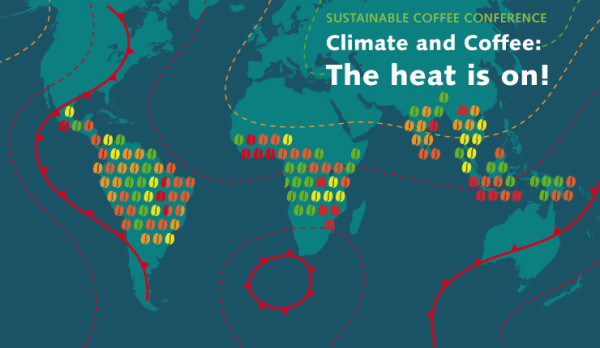The international development organization Hivos is calling on the world’s top roasters by volume to increase sustainability efforts as climate change threatens long-term production capabilities in some of the world’s main growing regions.
The world’s top 10 coffee roasters need to “increase demand for sustainable coffee, and to communicate transparently on the sustainable certified and verified volumes purchased,” says Edwin Huizing, the executive director of Hivos, the Amsterdam-based group that organized the Coffee Barometer 2014, which includes research and data contributions from four other NGOs: IUCN NL, Oxfam-Novib, Solidaridad and WWF.
(related: Climate Change Could Wipe Out Wild Arabica by 2080, Study Shows)
The report was released today, leading into the group’s “Sustainable Coffee Conference,” taking place this Thursday, July 3, in Amsterdam, and including keynote speeches from Peter Baker of CABI, Jamie Bechtel of New Course and Rick Peyser of Keurig Green Mountain.
The report’s main takeaway is that in many growing countries, including Brazil, Vietnam, Honduras and Uganda, areas that are currently suitable for large-scale coffee production will be substantially reduced by the effects of climate change by 2020. According to data collected by Hivos, the situation is especially dire as it says global production must be raised by nearly 15 percent in the next five years to meet increasing demand, led by Brazil, the United States, Europe and a growing middle class in parts of Asia.
(related: Coffee and Climate Science: An Inconvenient Truth)
Importantly, the report calls on top players in the roasting industry to help reverse the negative pattern. “The industry has to take more responsibility to invest collectively in the climate adaptation process, and ensure effective and long-term support for coffee farmers in all producing countries,” lead author Sjoerd Panhuysen wrote.
The report also describes a gap between certification programs at the producer level to the consumer market level, specifically citing the agencies Fairtrade International, Rainforest Alliance and UTZ.
(related: Proportion of Shade-Grown Coffee Down Nearly 20 Percent Since 1996, Researchers Say)
“There is a growing gap between the volumes of certified and verified coffee available — 40 percent of global production — at producer level, and the volume actually procured as certified coffee by the buyer,” says Hivos. “Only a quarter of FT, RA and UTZ is sold as such. In the short term, smallholder farmers bear the brunt of the additional costs involved in making production more sustainable.”
Hivos describes certifications as “tools toward sustainable production,” but not a “magic formula.” However, the group says consumer interest in certified coffee continues to grow to currently 15 percent of total consumption, although that represents only about half of the certified coffees available.
The report also names some names, calling out some of the world’s largest roasting companies for not increasing certification and sustainability efforts:
To realistically assess the commitments of the global top 10 coffee roasters, we should consider the size of their operations. Nestlé’s Nespresso AAA verified coffee represents 30% of its total procurement of green coffee. In the top five DE Master Blenders is the best performer reaching 25% UTZ certified coffee in 2013. On a different note, Lavazza, Italy’s market leader, sells only slightly more than 1% of its total market share as certified coffee.
(related: Is the Coffee Business Broken? Thoughts from Let’s Talk Coffee)
Beyond certification, Hivos says growing regions throughout Africa and Central America are in dire need of larger-scale investments in social programs and climate change mitigation strategies, including farm management education, and access to markets, financing and technology.
Panhuysen gives the following grim analysis: “At this point, all in all, there is no credible alternative to cover the social and environmental costs of fair and sustainable production.”
Nick Brown
Nick Brown is the editor of Daily Coffee News by Roast Magazine.







Comment